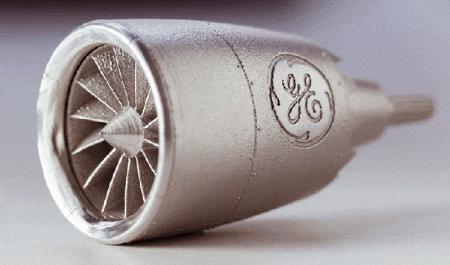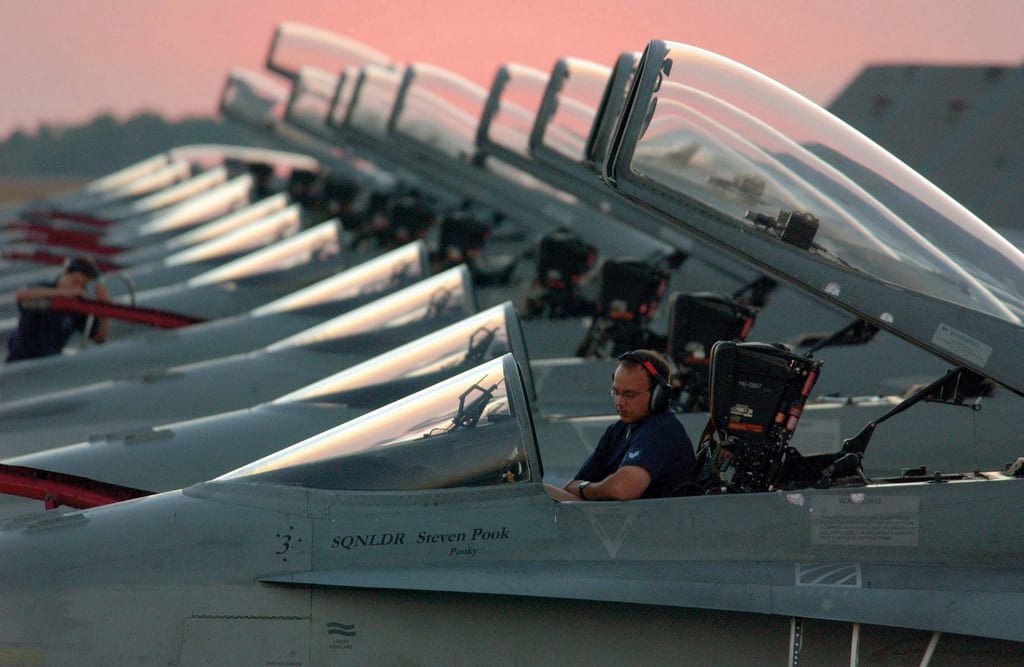Until now, 3D printing has earned most of its buzz from promising prototype capabilities. But as aerospace engineers search for ever-lighter (and more fuel-efficient) materials, 3D metal printing is moving from manufacturing theory to reality — and, in the process, offering a glimpse of the emerging tech’s potential in field service.
In January, British defense and aerospace corporation BAE Systems successfully completed what it called the first-ever test flight of a fighter jet built partially with 3D-printed metallic parts. Passenger jet engines will soon get the 3D printing treatment as well, led by massive investments from GE. The manufacturing giant’s bestselling Leap engine, which has already booked $80 billion in orders before even starting production, includes 3D-printed nozzles and is set to fly in passenger planes as early as 2016, according to Fortune. The 3D-printed fuel nozzles are five times stronger and can last five times longer than a traditional nozzle. Over the next five years, GE’s aviation division plans to produce at least 100,000 parts with 3D printing and invest an additional $3.5 billion in the technology.
And there could be more to come.
3D Printing At 30,000 Feet
“In the future, manufacturers are looking to develop the entire aircraft from engine to wings” using 3D printing in some way, said Jithendranath Rabindranath, research analyst at Frost & Sullivan, a global market research firm. First, though, manufacturers need to figure out how to produce the large parts needed for aircraft using 3D printers. Unlike the 3D-printed plastic industry, which has sparked dozens of new companies and innovations in recent years, the world of 3D metal printing has evolved slowly because of the complicated technical challenges and higher coasts of working with metals.

A GEnx engine model created with a new additive 3D printing technique called direct metal laser melting. Image via GE
Now, most metallic prints can’t go beyond a cubic foot in size, so manufacturers are focused on using 3D printing to reduce the weight of small, complicated components like those found in landing gear and engines. Eventually, says Rabindranath, new 3D techniques “could introduce a whole new level of performance.”
The benefits of the new manufacturing process are already starting to bear fruit. Dr. Jon Harrop, director of research firm IdTechEx and lead researcher on its recent 3D printing report, says that GE’s 3D-printed fuel nozzle outstrips traditional nozzles on a technical level. “The actual thing they are printing is technically better than traditionally manufactured parts,” said Harrop. “It has better integrated cooling channels that couldn’t have been manufactured by any other means.”
Potential Impacts In (and Above) The Field
Besides manufacturing, Harrop says new 3D metal printers, which are different than the consumer-driven 3D plastics printers, could one day help service technicians work better. One technique, blown powder printing, involves depositing a thin layer of powdered metal and melting it with a high-powered laser, has one important advantage: it allows users to build on top of an existing structure. So instead of using high-heat welding to replace a damaged engine turbine, technicians could one day use 3D printing to build on top of the old part, which would put less heat (and stress) on the rest of the turbine, says Harrop.
When it comes time for complete replacement, 3D printing could drastically reduce the time and cost needed to make a new part. Harrop describes a hypothetical scenario in which remote airports could use a 3D printer to service plans as needed, rather than manage a complicated inventory for numerous plane models.
With the aerospace industry’s strict manufacturing and safety regulations, it could be a while before some of the most exciting uses of 3D printing take off. But, recent breakthroughs demonstrate the emerging technology’s potential to remake parts replacement in the field service industry.


Share this: